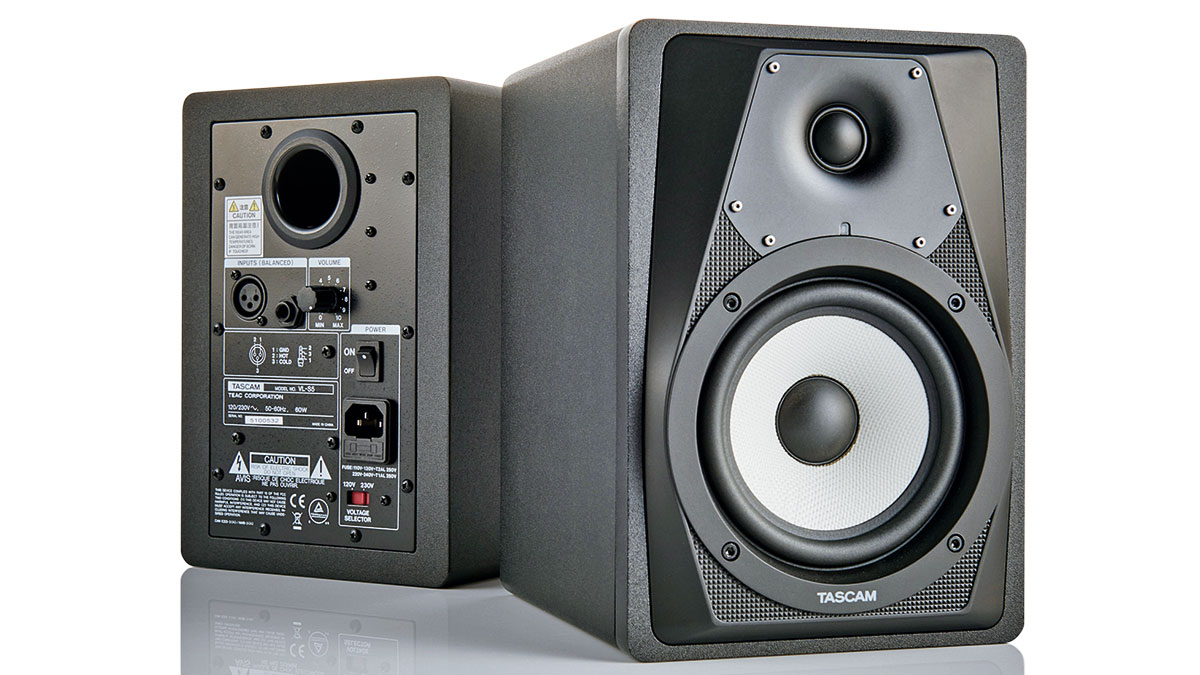MusicRadar Verdict
A cost-effective powered monitor that will give decent sound quality and not take up too much space.
Pros
- +
Good value and sound quality. Compact.
Cons
- -
Won't deliver massive bottom end.
MusicRadar's got your back
Tascam may be best known for its audio interfaces and digital recorders but it has also produced a small range of monitor speakers.
Its latest monitor is the VL-S5, available singly or as a pair, and a successor to the likes of the VL-X5 which debuted around ten years ago. A smaller 3-inch woofer- equipped VL-S3 model is also available.
Tascam says that the VL-S5 is designed to fulfil the needs of home studios and is ideal for pairing with one of their US series audio interfaces.
The VL-S5 is a compact monitor at 10 inches high and with a footprint of around 7 x 8 inches, so it is eminently suitable for placement, with tweeters at ear level, either side of your computer in a close-working environment, especially as it features magnetic shielding to prevent adverse effects to computer displays.
Active and powered from a supplied IEC cable, the VL-S5 is a bi-amped design with separate onboard amplifiers handling the high and low-end.
There's 30 Watts of power driving the 1-inch silk dome tweeter and 40 Watts for the low-end's 5.25-inch Kevlar cone woofer. The crossover frequency between the two has been set at 3.2kHz - a little higher than some rival manufacturers' - to avoid phase distortion on the critical midrange area.
Tascam settled on that frequency after much testing and believe that it ensures a seamless response without any distortion. The rear of the cabinet also features a small circular port.
Want all the hottest music and gear news, reviews, deals, features and more, direct to your inbox? Sign up here.
Placement away from a wall may be crucial as Tascam has not included any EQ tweaks (as found on the previous VL-X5) to compensate for any unnatural bass generated by placement in corners or by walls.
There's no provision for tuning the top-end to the listener's taste either. The only control, besides the on/off switch, is a volume knob that has no notches, so is best turned up to the max to match up a pair of monitors.
Connections are either via a balanced XLR or TRS jack - there are no unbalanced RCA (phono) inputs. A green front panel LED lets you know that the monitor is powered up.
Clear and crisp
Playing a selection of familiar mixes through the pair of VL-S5s, the first thing of note was that they have plenty of useful power for a small set of monitors, fine for everyday listening at sensible levels, with enough in reserve to crank them up occasionally without straining.
Stereo imaging seemed precise with every sound in its own place and the clarity was there too with no obvious problems in the midrange. In terms of overall frequency range, the VL-S5 has a 5.25-inch woofer and extends down to 60Hz so is probably not the thing for anyone looking for a massive bottom-end.
However, we found the bass-end to be solid and well-represented in the overall balance, with plenty there to make valid judgements when mixing. The top-end is clear and crisp, perhaps a touch on the bright side although not harsh, but the general impression is that these are nice-sounding monitors that are well set up for everyday use.
Tascam has come up with something that's really rather good with the VL-S5. A pair of these would be a very good practical choice if you do not have a lot of space to place monitors in but still want good quality sound.
With their compact size and magnetic shielding, they could partner up with a laptop and audio interface to form a practical music-making rig that could be easily packed away or moved from room to room if you don't have a dedicated space to leave your gear permanently set up.
At street prices of around £180 for a pair they also represent really good value for money.
Trevor Curwen has played guitar for several decades – he's also mimed it on the UK's Top of the Pops. Much of his working life, though, has been spent behind the mixing desk, during which time he has built up a solid collection of the guitars, amps and pedals needed to cover just about any studio session. He writes pedal reviews for Guitarist and has contributed to Total Guitar, MusicRadar and Future Music among others.

